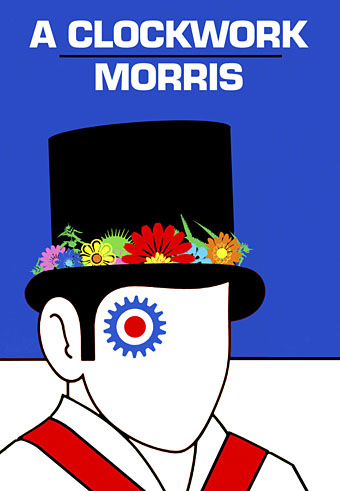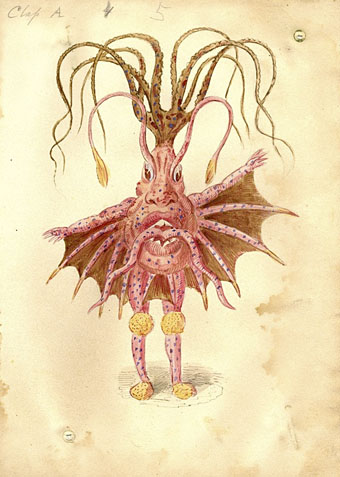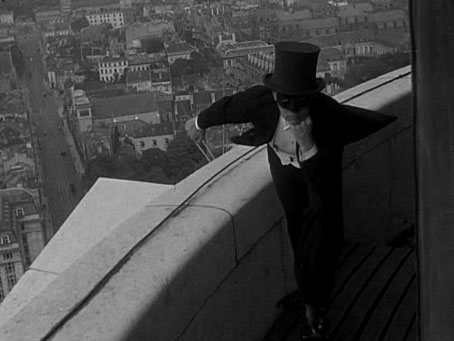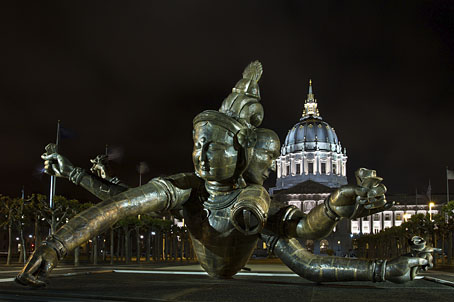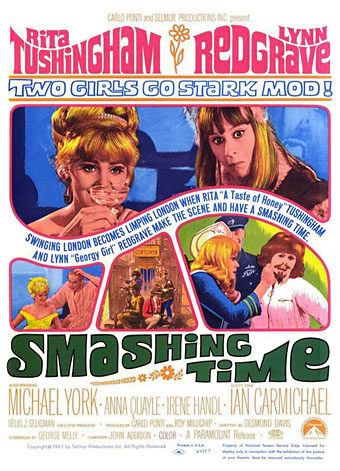Sumer Is Icumen In but you wouldn’t have known it today, it being cold and wet, O my brothers. The picture above is the work of David Owen whose Ink Corporation does a splendid job of updating the iconography of the folk music world. Via Electric Eden.
• Biting the hand that feeds: designer Jonathan Barnbrook’s contribution to the Biennale of Sydney takes a dig at the whole enterprise. The art market is impervious to criticism (or shame) but the gesture is an amusing one.
• Emanuel Schongut’s book covers of the 1960s and 1970s on the artist’s own Flickr pages. Via A Journey Round My Skull.
• Owen Freeman on illustrating William Burroughs. Related: Reality Studio interviews Victor Bockris.
• RIP Jack Birkett, Derek Jarman’s Caliban and the Pope in Caravaggio. And RIP Dennis Hopper, actor, director and photographer.
“Sea Nettle” (1873), a costume design by the Mistick Krewe of Comus. From this BibliOdyssey posting of New Orleans Mardi Gras designs.
• Chris Summerfield’s surfer boys at Lulu.
• Homotography also has a Tumblr page.
• The Ghost Box Study Series Singles.
• More 3D projection on buildings.
• John Foxx interviewed at FACT.
Song of the week: Ineffect (1989) by Material.

